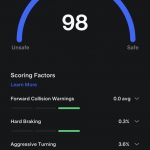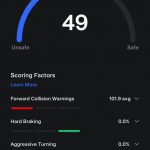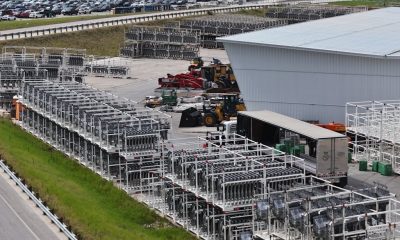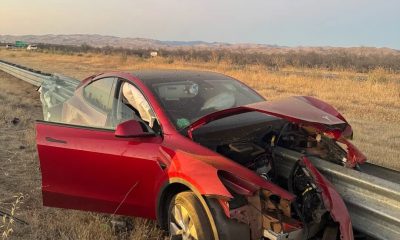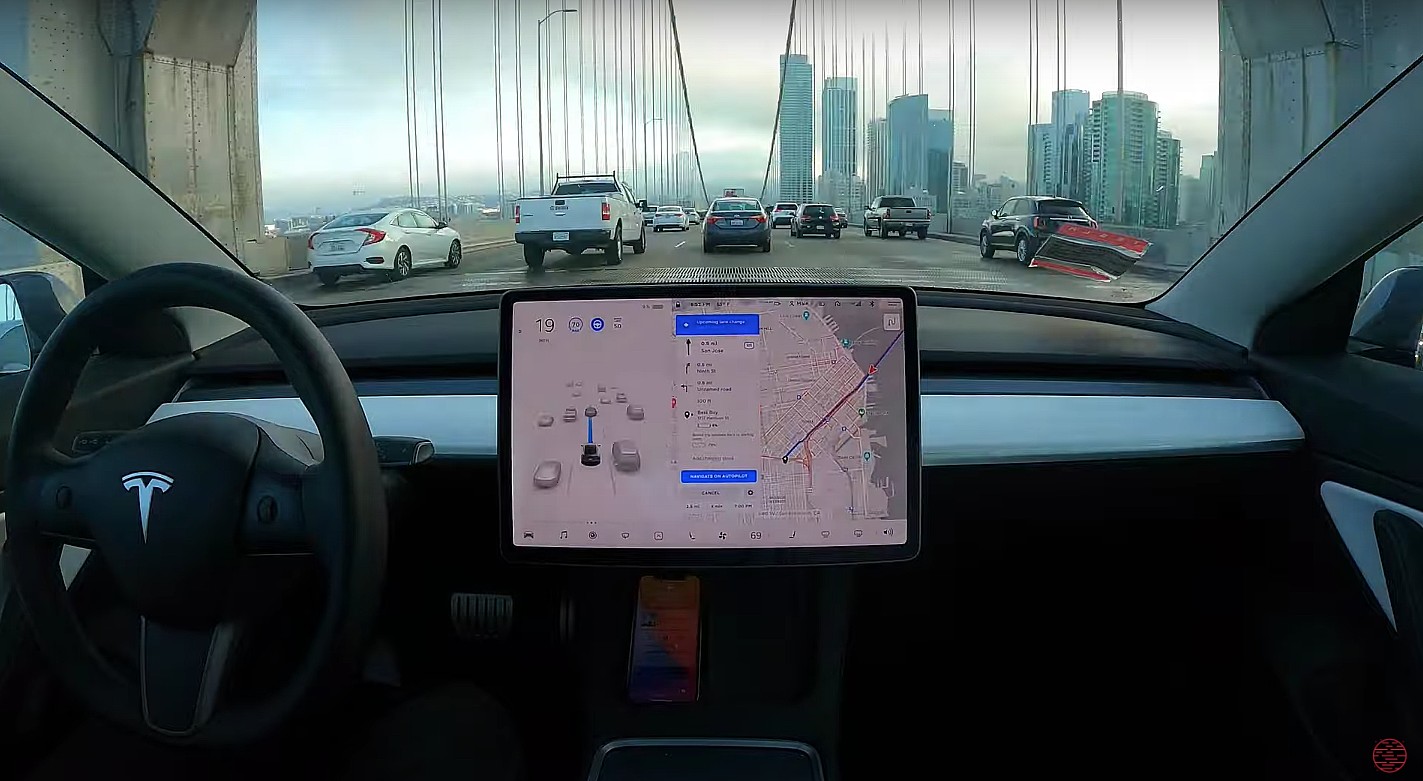

News
Tesla introduces Safety Score (Beta) system that incentivizes safe driving
As Tesla starts the rollout of its “Request Full Self Driving” button to more members of its fleet, the company has also introduced its Safety Score (Beta) system to evaluate driving behaviors. With this new system on hand, Tesla has effectively incentivized and gamified safe driving, which would likely make the rollout of programs such as FSD Beta a lot smoother and less likely to result in accidents.
Safety Scores are an assessment of driving behavior based on five metrics that the company calls “Safety Factors.” These factors are Forward Collision Warnings (FCW) per 1,000 Miles, Hard Braking, Aggressive Turning, Unsafe Following, and Forced Autopilot Disengagement. Tesla utilizes a Predicted Collision Frequency (PCF) formula based on statistical modeling using 6 billion miles of fleet data to predict how many collisions may occur per 1 million miles driven. The PCF is converted into a Safety Score between 0 and 100, which are then viewed through the Tesla App.
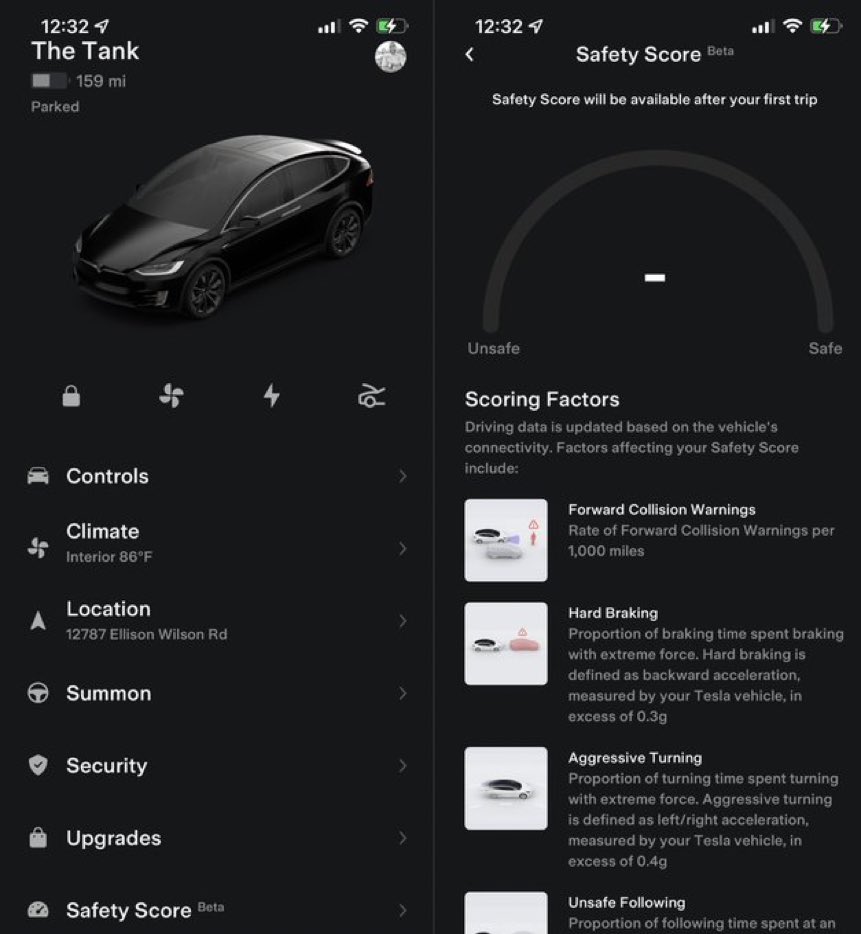
Tesla released some tips on how drivers could improve their Safety Score. To improve ratings on Forward Collision Warnings per 1,000 Miles, drivers are advised to maintain a following distance that gives enough time to react to slower or stationary vehicles ahead. Hard Braking scores, on the other hand, could be improved by engaging the brake pedal early when slowing down and using regen braking whenever possible and safe to do so. Hard Braking scores should also improve when drivers maintain a safe distance from the vehicle in front of them.
Aggressive Turning is defined as left/right acceleration in excess of 0.4g. Thus, drivers could improve their numbers in this metric by taking turns gradually, reducing their speed heading into a turn, and gradually accelerating afterward. Unsafe Following scores would likely be easy to improve, as drivers simply need to maintain a following distance worth several car lengths to the vehicle in front. This way, drivers could have enough time to react just in case something untoward happens.
Forced Autopilot Disengagement highlights the need to use the company’s advanced driver-assist features in a responsible manner. Proper Autopilot use is outlined in vehicles’ Owner’s Manual, and it requires drivers to have their hands on the wheel and pay close attention to the road. Tesla notes that the Forced Autopilot Disengagement metric is a 1 or 0 indicator, with the value being 1 if Autopilot forcibly disengages during a drive and 0 if the system is operated nominally.
- An example of a high Safety Score, reflecting generally good driving behaviors. (Credit: Jason DeBolt/Twitter)
- An example of a low Safety Score, reflecting some unsafe driving behaviors. (Credit: Tesla Raj/Twitter)
Safety Scores are updated every time a trip is taken on a Tesla vehicle. Provided that a Tesla is connected to the internet, Safety Scores should provide immediate feedback on a driving session. Vehicles that are not connected to the internet would update their Safety Scores as soon as cellular connectivity is secured. It should also be noted that all trips over 0.1 miles are considered as a valid driving session that could affect a driver’s rating.
Safety Scores are vehicle-specific as well, so drivers with multiple Teslas could have varying ratings for each of their cars. Lastly, Safety Scores should reset when a vehicle is sold, which means that a Tesla’s new owner should not be affected by the ratings of the previous driver. Drivers could also not carry over their Safety Scores from one vehicle if they purchase a new Tesla.
A full and extensive discussion of how Tesla’s Safety Scores work could be found here.
Don’t hesitate to contact us with account tips. Just send a message to tips@teslarati.com to give us a heads up.
News
These Tesla, X, and xAI engineers were just poached by OpenAI
The news is the latest in an ongoing feud between Elon Musk and the Sam Altman-run firm OpenAI.

OpenAI, the xAI competitor for which Elon Musk previously served as a boardmember and helped to co-found, has reportedly poached high-level engineers from Tesla, along with others from xAI, X, and still others.
On Tuesday, Wired reported that OpenAI hired four high-level engineers from Tesla, xAI, and X, as seen in an internal Slack message sent by co-founder Greg Brockman. The engineers include Tesla Vice President of Software Engineering David Lau, X and xAI’s head of infrastructure engineering Uday Ruddarraju, and fellow xAI infrastructure engineer Mike Dalton. The hiring spree also included Angela Fan, an AI researcher from Meta.
“We’re excited to welcome these new members to our scaling team,” said Hannah Wong, an OpenAI spokesperson. “Our approach is to continue building and bringing together world-class infrastructure, research, and product teams to accelerate our mission and deliver the benefits of AI to hundreds of millions of people.”
Lau has been in his position as Tesla’s VP of Software Engineering since 2017, after previously working for the company’s firmware, platforms, and system integration divisions.
“It has become incredibly clear to me that accelerating progress towards safe, well-aligned artificial general intelligence is the most rewarding mission I could imagine for the next chapter of my career,” Lau said in a statement to Wired.
🚨Optimistic projections point to xAI possibly attaining profitability by 2027, according to Bloomberg's sources.
If accurate, this would be quite a feat for xAI. OpenAI, its biggest rival, is still looking at 2029 as the year it could become cash flow positive.💰 https://t.co/pE5Z9daez8
— TESLARATI (@Teslarati) June 18, 2025
READ MORE ON OPENAI: Elon Musk’s OpenAI lawsuit clears hurdle as trial looms
At xAI, Ruddarraju and Dalton both played a large role in developing the Colossus supercomputer, which is comprised of over 200,000 GPUs. One of the major ongoing projects at OpenAI is the company’s Stargate program,
“Infrastructure is where research meets reality, and OpenAI has already demonstrated this successfully,” Ruddarraju told Wired in another statement. “Stargate, in particular, is an infrastructure moonshot that perfectly matches the ambitious, systems-level challenges I love taking on.”
Elon Musk is currently in the process of suing OpenAI for shifting toward a for-profit model, as well as for accepting an investment of billions of dollars from Microsoft. OpenAI retaliated with a counterlawsuit, in which it alleges that Musk is interfering with the company’s business and engaging in unfair competition practices.
Elon Musk confirms Grok 4 launch on July 9 with livestream event
News
SpaceX share sale expected to back $400 billion valuation
The new SpaceX valuation would represent yet another record-high as far as privately-held companies in the U.S. go.

A new report this week suggests that Elon Musk-led rocket company SpaceX is considering an insider share sale that would value the company at $400 billion.
SpaceX is set to launch a primary fundraising round and sell a small number of new shares to investors, according to the report from Bloomberg, which cited people familiar with the matter who asked to remain anonymous due to the information not yet being public. Additionally, the company would sell shares from employees and early investors in a follow-up round, while the primary round would determine the price for the secondary round.
The valuation would represent the largest in history from a privately-owned company in the U.S., surpassing SpaceX’s previous record of $350 billion after a share buyback in December. Rivaling company valuations include ByteDance, the parent company of TikTok, as well as OpenAI.
Bloomberg went on to say that a SpaceX representative didn’t respond to a request for comment at the time of publishing. The publication also notes that the details of such a deal could still change, especially depending on interest from the insider sellers and share buyers.
Axiom’s Ax-4 astronauts arriving to the ISS! https://t.co/WQtTODaYfj
— TESLARATI (@Teslarati) June 26, 2025
READ MORE ON SPACEX: SpaceX to decommission Dragon spacecraft in response to Pres. Trump war of words with Elon Musk
SpaceX’s valuation comes from a few different key factors, especially including the continued expansion of the company’s Starlink satellite internet company. According to the report, Starlink accounts for over half of the company’s yearly revenue. Meanwhile, the company produced its 10 millionth Starlink kit last month.
The company also continues to develop its Starship reusable rocket program, despite the company experiencing an explosion of the rocket on the test stand in Texas last month.
The company has also launched payloads for a number of companies and government contracts. In recent weeks, SpaceX launched Axiom’s Ax-4 mission, sending four astronauts to the International Space Station (ISS) for a 14-day stay to work on around 60 scientific experiments. The mission was launched using the SpaceX Falcon 9 rocket and a new Crew Dragon capsule, while the research is expected to span a range of fields including biology, material and physical sciences, and demonstrations of specialized technology.
News
Tesla Giga Texas continues to pile up with Cybercab castings
Tesla sure is gathering a lot of Cybercab components around the Giga Texas complex.
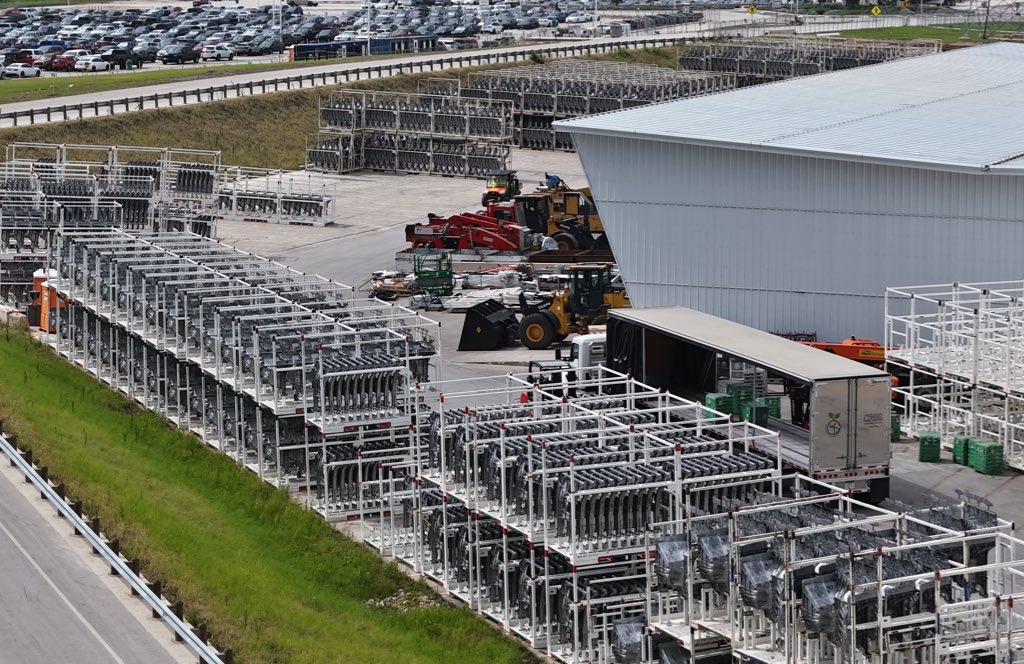
Tesla may be extremely tight-lipped about the new affordable models that it was expected to start producing in the first half of the year, but the company sure is gathering a lot of Cybercab castings around the Giga Texas complex. This is, at least, as per recent images taken of the facility.
Cybercab castings galore
As per longtime drone operator Joe Tegtmeyer, who has been chronicling the developments around the Giga Texas complex for several years now, the electric vehicle maker seems to be gathering hundreds of Cybercab castings around the factory.
Based on observations from industry watchers, the drone operator appears to have captured images of about 180 front and 180 rear Cybercab castings in his recent photos.
Considering the number of castings that were spotted around Giga Texas, it would appear that Tesla may indeed be preparing for the vehicle’s start of trial production sometime later this year. Interestingly enough, large numbers of Cybercab castings have been spotted around the Giga Texas complex in the past few months.
Cybercab production
The Cybercab is expected to be Tesla’s first vehicle that will adopt the company’s “unboxed” process. As per Tesla’s previous update letters, volume production of the Cybercab should start in 2026. So far, prototypes of the Cybercab have been spotted testing around Giga Texas, and expectations are high that the vehicle’s initial trial production should start this year.
With the start of Tesla’s dedicated Robotaxi service around Austin, it might only be a matter of time before the Cybercab starts being tested on public roads as well. When this happens, it would be very difficult to deny the fact that Tesla really does have a safe, working autonomous driving system, and it has the perfect vehicle for it, too.
-

 Elon Musk1 week ago
Elon Musk1 week agoTesla investors will be shocked by Jim Cramer’s latest assessment
-

 News2 weeks ago
News2 weeks agoTesla Robotaxi’s biggest challenge seems to be this one thing
-

 Elon Musk1 day ago
Elon Musk1 day agoElon Musk confirms Grok 4 launch on July 9 with livestream event
-

 News2 weeks ago
News2 weeks agoWatch the first true Tesla Robotaxi intervention by safety monitor
-

 News5 days ago
News5 days agoTesla Model 3 ranks as the safest new car in Europe for 2025, per Euro NCAP tests
-

 Elon Musk2 weeks ago
Elon Musk2 weeks agoA Tesla just delivered itself to a customer autonomously, Elon Musk confirms
-

 Elon Musk2 weeks ago
Elon Musk2 weeks agoxAI welcomes Memphis pollution results, environmental groups push back
-

 Elon Musk2 weeks ago
Elon Musk2 weeks agoElon Musk confirms Tesla Optimus V3 already uses Grok voice AI

